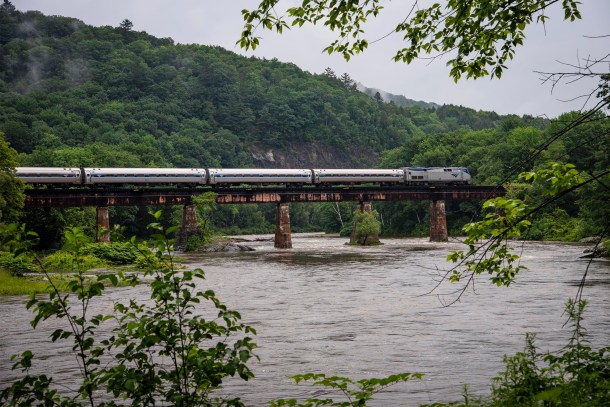
Last month, Congress passed President Joe Biden’s federal infrastructure bill after several months of delays.
Vermont is expected to receive at least $2.2 billion from the bill.
While details on how the state will use the money won’t become available until January, when Gov. Phil Scott proposes his annual budget for the fiscal year that begins next July 1, the Vermont Agency of Transportation has no shortage of ideas for how to spend its share.
According to Transportation Secretary Joe Flynn, the bill will provide a 53% increase in funding for highways, bridges, culverts and bike and pedestrian facilities, a 35% increase in public transit funding, and lesser increases for aviation and for passenger and freight rail travel.
The bill will also provide $21 million over five years for a new vehicle electrification program.
In an email, Michele Boomhower, director of the agency’s policy, planning & intermodal development division, explained that reconstructing bridges, roads and culverts is a major priority right now, particularly because flooding in recent years has revealed Vermont’s culverts are too small to cope with a changing climate that’s likely to bring massive rainstorms in years to come.
The agency maintains about 60,000 culverts — the pipes that carry streams under roads — throughout the state and is setting priorities for plans to update or replace them.
Additionally, the agency plans to update several airports — runway reconstruction at Rutland Southern Vermont Regional Airport and at the Franklin County State Airport in Swanton, and a runway update at Hartness State Airport in Springfield.
In alignment with the brand-new Vermont Climate Action Plan’s push for more electric cars, trucks and buses to help lower emissions, the state plans to invest money into the infrastructure that electric vehicles need — mainly, charging stations in convenient locations.
“The agency’s initial goal of having an EV Fast Charger within 30 miles of every Vermonter has been realized, with final installations underway,” wrote Boomhower. The state is working on a 10-year plan for electric vehicle charging, aiming to have a charging station within 5 miles of every interstate highway exit and every 50 miles along major highways.
“With the $21 million in new federal funding, we expect to be able to deploy between 110 and 130 fast chargers over the next five years. There are currently 15 universal fast-charging stations, which any model of EV can use,” Boomhower wrote.
The federal money will also be used to update railways and bridges, such as the Ethan Allen corridor between Burlington and Rutland.
Finally, the agency aims to spend $22.5 million on updating and expanding public transit, and to transition to electric buses.
More information on specific projects will become available in the coming months.
